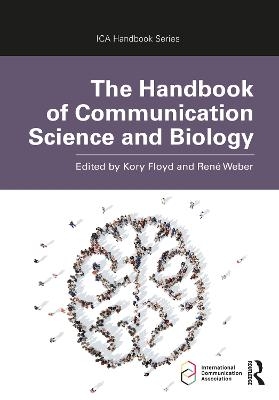
The Handbook of Communication Science and Biology
Routledge (Verlag)
978-0-8153-7673-6 (ISBN)
The Handbook of Communication Science and Biology charts the state of the art in the field, describing relevant areas of communication studies where a biological approach has been successfully applied. The book synthesizes theoretical and empirical development in this area thus far and proposes a roadmap for future research.
As the biological approach to understanding communication has grown, one challenge has been the separate evolution of research focused on media use and effects and research focused on interpersonal and organizational communication, often with little intellectual conversation between the two areas. The Handbook of Communication Science and Biology is the only book to bridge the gap between media studies and human communication, spurring new work in both areas of focus.
With contributions from the field’s foremost scholars around the globe, this unique book serves as a seminal resource for the training of the current and next generation of communication scientists, and will be of particular interest to media and psychology scholars as well.
Kory Floyd is Professor of Communication and Professor of Psychology at the University of Arizona. René Weber is Professor of Communication at the University of California Santa Barbara and the Director of UCSB’s Media Neuroscience Lab (http://medianeuroscience.org).
Part 1: Communication Science and Biology 1. Introduction 2. Building communication science through the blue prints of DC Dennett & Robert Pirsig Part 2: Evolutionary Perspectives 3. Natural selection and the nature of communication 4. Costly signaling in human communication 5. Evolution, structure, and functions of human laughter 6. Behavior genetics and twin studies: Principles, methods, and analytical techniques for innovative communication research 7. Evolutionary reasoning in communication scholarship: Generating and testing sound hypotheses Part 3: Communication and Media Neuroscience 8. Mediated messages and synchronized brains 9. The neuroscience of persuasion and information propagation: Key role of the mentalizing system 10. Social media in neuroscience research 11. A cognitive neuroscience perspective on political knowledge, misinformation, and memory for "facts" 12. Advancing the synchronization theory of flow experience 13. Attention, working memory, and media multitasking 14. Video gaming: A challenge for the brain’s reward system? 15. Biological perspectives of media violence and aggression 16. Virtual reality for communication neuroscience 17. Is there a cultural brain? Analyzing individual differences in processing media messages 18. Neuromarketing: How to choose the right measures 19. Investigating communication using peripheral nervous system measurement 20. The state-of-the-art and the future of brain imaging methodology in communication research Part 4: Interpersonal Communication 21. Emotion and emotional communication 22. The biology of affectionate communication 23. Social support and physiology: Current trends and future directions 24. Developmental psychophysiology and the human stress response during communication 25. Physiological arousal while ruminating about conflict with a quantum application to relational observation 26. Communication, stress, and thriving in close relationships 27. Sexual communication and biology 28. The state-of-the-art and the future of "wet psychophysiology" in communication research Part 5: Integrated Perspectives 29. How the LC4MP became the DHCCST: An epistemological fairy tale 30. The life of a model: Commentary on "How the LC4MP became the DHCCST" 31. Bodies and minds in sync: Forms and functions of interpersonal synchrony in human interaction 32. Physically, biologically, and socially constructed notions of sex and gender in communication science 33. Communication and quantum cognition 34. Advancing the model of intuitive morality and exemplars
| Erscheinungsdatum | 27.05.2020 |
|---|---|
| Reihe/Serie | ICA Handbook Series |
| Zusatzinfo | 9 Tables, black and white; 9 Line drawings, black and white; 14 Halftones, black and white; 23 Illustrations, black and white |
| Verlagsort | New York |
| Sprache | englisch |
| Maße | 178 x 254 mm |
| Gewicht | 1011 g |
| Themenwelt | Naturwissenschaften ► Biologie ► Humanbiologie |
| Naturwissenschaften ► Biologie ► Zoologie | |
| Sozialwissenschaften ► Kommunikation / Medien ► Kommunikationswissenschaft | |
| Sozialwissenschaften ► Kommunikation / Medien ► Medienwissenschaft | |
| ISBN-10 | 0-8153-7673-1 / 0815376731 |
| ISBN-13 | 978-0-8153-7673-6 / 9780815376736 |
| Zustand | Neuware |
| Informationen gemäß Produktsicherheitsverordnung (GPSR) | |
| Haben Sie eine Frage zum Produkt? |
aus dem Bereich


